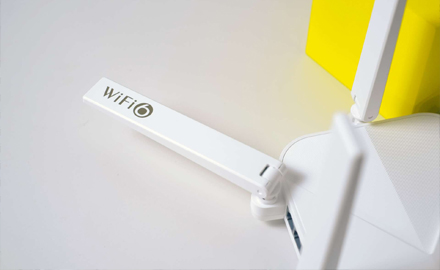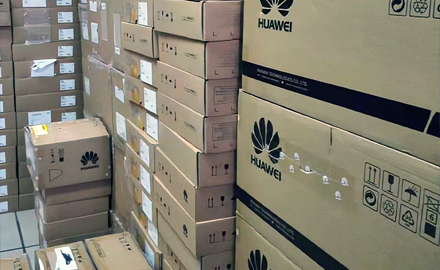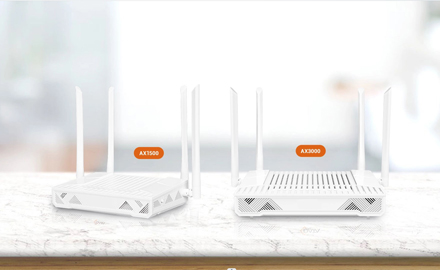Optical Network Units (ONUs) are critical components in passive optical networks (PONs), providing the interface between the optical distribution network and end-user devices. ONUs are classified based on various criteria, including their architecture, functionality, deployment scenarios, and service offerings. Understanding the classification of ONUs is essential for designing, deploying, and managing efficient and scalable fiber-based access networks. This explanation will delve into the classification of ONUs across multiple dimensions.

1. Classification Based on Architecture:
a. Gigabit Passive Optical Network (GPON) ONUs:
GPON ONUs are designed to operate in GPON-based PON architectures, which are widely deployed for delivering high-speed broadband services in residential, business, and enterprise environments. GPON ONUs support downstream and upstream data rates of up to 2.5 Gbps and 1.25 Gbps, respectively, and are compatible with ITU-T G.984 standards. They typically feature multiple Gigabit Ethernet ports, VoIP capabilities, and support for various broadband services such as internet access, IPTV, and voice services.
b. Ethernet Passive Optical Network (EPON) ONUs:
EPON ONUs are tailored for EPON-based PON architectures, which are prevalent in Ethernet-based access networks. EPON ONUs adhere to IEEE 802.3ah standards and support downstream and upstream data rates of up to 1 Gbps. They often include Ethernet interfaces, VoIP support, and are suitable for delivering broadband services in residential, business, and campus environments.
c. XG-PON ONUs:
XG-PON (10 Gigabit-capable Passive Optical Network) ONUs are designed to operate in PON architectures that support higher data rates than GPON or EPON. XG-PON ONUs comply with ITU-T G.987 standards and support downstream and upstream data rates of up to 10 Gbps. They are suitable for applications requiring ultra-high-speed broadband access, such as high-definition video streaming, cloud services, and enterprise connectivity.
2. Classification Based on Functionality:
a. Basic ONUs:
Basic ONUs provide essential functions such as optical signal reception, electrical signal conversion, and user device connectivity. They typically feature Ethernet ports for connecting computers, routers, and other end-user devices to the PON network. Basic ONUs focus on delivering basic broadband services like internet access and may lack advanced features such as VoIP support or Wi-Fi connectivity.
b. Triple-Play ONUs:
Triple-Play ONUs are equipped with additional functionalities to support a comprehensive range of services, including broadband internet access, IPTV (Internet Protocol Television), and VoIP telephony. These ONUs feature multiple Ethernet ports, VoIP adapters, and integrated Wi-Fi capabilities to enable seamless delivery of triple-play services to end-users. Triple-Play ONUs are commonly deployed in residential and multi-dwelling unit (MDU) environments where subscribers demand bundled broadband services.
c. Enterprise ONUs:
Enterprise ONUs are tailored for business and enterprise environments, where high-speed connectivity, reliability, and security are paramount. These ONUs often feature advanced networking functionalities such as VLAN (Virtual Local Area Network) support, QoS (Quality of Service) mechanisms, and enhanced security features like firewall protection and VPN (Virtual Private Network) support. Enterprise ONUs are designed to meet the stringent requirements of corporate networks, data centers, and campus environments.
3. Classification Based on Deployment Scenarios:
a. Indoor ONUs:
Indoor ONUs are installed inside customer premises, typically in residential buildings, offices, or data centers. These ONUs are compact, lightweight, and designed for easy installation and maintenance. Indoor ONUs connect to the optical distribution network via fiber-optic cables and provide Ethernet interfaces or Wi-Fi connectivity to end-user devices.
b. Outdoor ONUs:
Outdoor ONUs are deployed in outdoor environments, such as street cabinets, utility poles, or underground vaults, to extend fiber-optic connectivity closer to end-users. Outdoor ONUs are ruggedized to withstand harsh environmental conditions and feature weatherproof enclosures for protection against moisture, dust, and temperature fluctuations. Outdoor ONUs are commonly used in fiber-to-the-curb (FTTC) and fiber-to-the-building (FTTB) deployments, where fiber access is extended from the central office to outdoor locations closer to end-users.
c. Central Office ONUs:
Central Office ONUs are installed in central offices or data centers and serve as aggregation points for multiple PON subscribers. These ONUs terminate optical signals from the OLT (Optical Line Terminal) and distribute electrical signals to individual subscriber ONUs. Central Office ONUs play a crucial role in managing traffic aggregation, service provisioning, and network management functions within the PON architecture.
4. Classification Based on Service Offerings:
a. Residential ONUs:
Residential ONUs are designed to meet the broadband connectivity needs of residential subscribers, delivering high-speed internet access, IPTV services, and VoIP telephony. These ONUs are optimized for home environments and feature user-friendly interfaces, parental control options, and Wi-Fi connectivity for seamless multimedia streaming and online gaming.
b. Business ONUs:
Business ONUs cater to the connectivity requirements of small, medium, and large enterprises, offering reliable and scalable broadband services for corporate networks, data centers, and branch offices. Business ONUs prioritize features like VLAN support, QoS mechanisms, and advanced security features to ensure seamless connectivity, performance, and data protection for business-critical applications and services.
c. Carrier-Grade ONUs:
Carrier-Grade ONUs are designed to meet the stringent performance, reliability, and scalability requirements of telecommunications service providers and network operators. These ONUs undergo rigorous testing and certification processes to ensure compliance with industry standards and interoperability with network infrastructure components. Carrier-Grade ONUs feature advanced management capabilities, fault tolerance mechanisms, and support for carrier-grade services such as IPTV, VoIP, and cloud-based applications.
In conclusion, Optical Network Units (ONUs) are classified based on various criteria, including their architecture, functionality, deployment scenarios, and service offerings. Understanding the classification of ONUs is crucial for designing, deploying, and managing efficient and scalable fiber-based access networks that meet the diverse connectivity needs of residential, business, and enterprise subscribers. By selecting the appropriate ONU types based on specific requirements and use cases, network operators and service providers can optimize network performance, enhance service delivery, and ensure customer satisfaction in today's rapidly evolving telecommunications landscape.

 The Difference Between AX1800 ONU and AX3000 ONU
The Difference Between AX1800 ONU and AX3000 ONU
 How are Huawei OLTs Classified?
How are Huawei OLTs Classified?
 The Future Trend of Optical Line Terminals (OLTs)
The Future Trend of Optical Line Terminals (OLTs)
 The Difference Between ONU and ONT
The Difference Between ONU and ONT